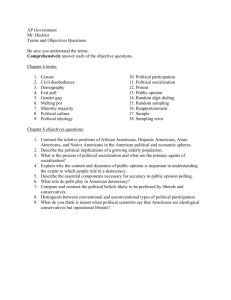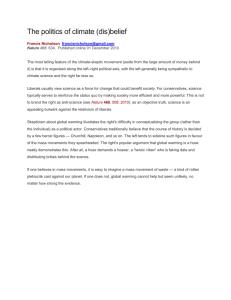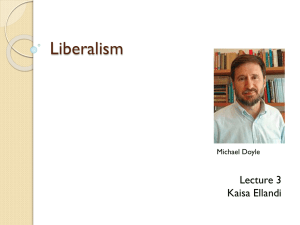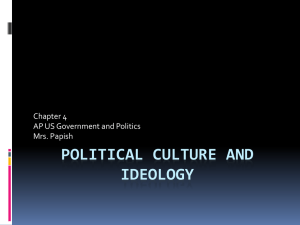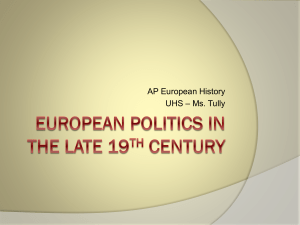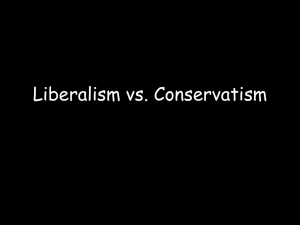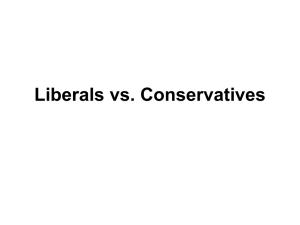Heg: Political Ideology
advertisement
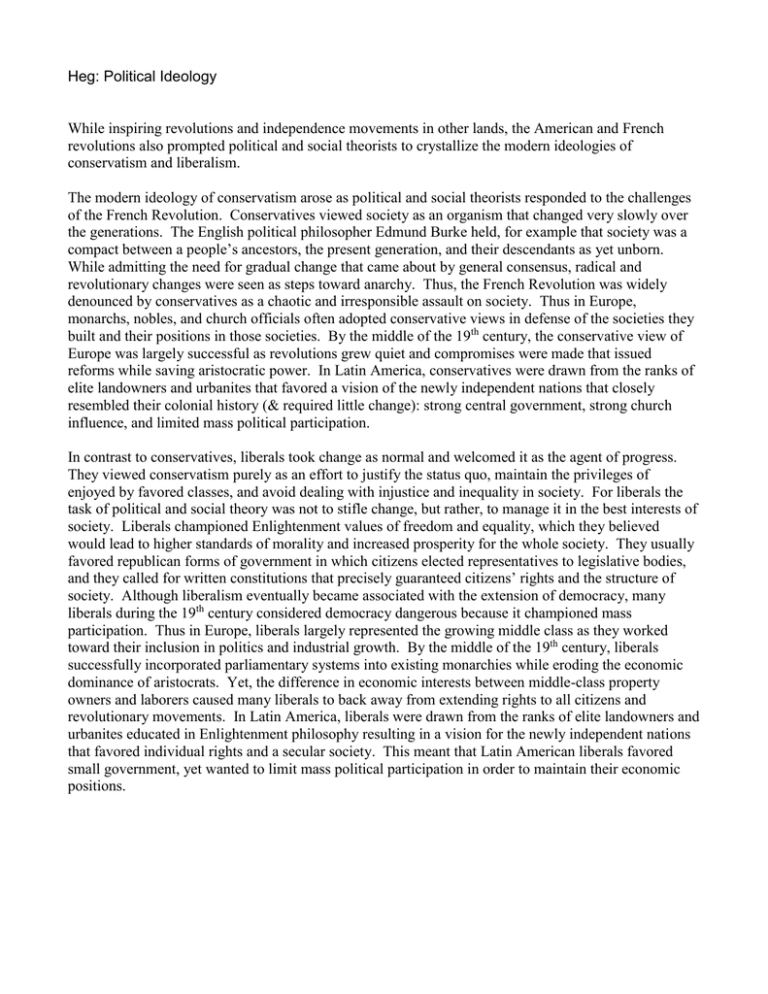
Heg: Political Ideology While inspiring revolutions and independence movements in other lands, the American and French revolutions also prompted political and social theorists to crystallize the modern ideologies of conservatism and liberalism. The modern ideology of conservatism arose as political and social theorists responded to the challenges of the French Revolution. Conservatives viewed society as an organism that changed very slowly over the generations. The English political philosopher Edmund Burke held, for example that society was a compact between a people’s ancestors, the present generation, and their descendants as yet unborn. While admitting the need for gradual change that came about by general consensus, radical and revolutionary changes were seen as steps toward anarchy. Thus, the French Revolution was widely denounced by conservatives as a chaotic and irresponsible assault on society. Thus in Europe, monarchs, nobles, and church officials often adopted conservative views in defense of the societies they built and their positions in those societies. By the middle of the 19th century, the conservative view of Europe was largely successful as revolutions grew quiet and compromises were made that issued reforms while saving aristocratic power. In Latin America, conservatives were drawn from the ranks of elite landowners and urbanites that favored a vision of the newly independent nations that closely resembled their colonial history (& required little change): strong central government, strong church influence, and limited mass political participation. In contrast to conservatives, liberals took change as normal and welcomed it as the agent of progress. They viewed conservatism purely as an effort to justify the status quo, maintain the privileges of enjoyed by favored classes, and avoid dealing with injustice and inequality in society. For liberals the task of political and social theory was not to stifle change, but rather, to manage it in the best interests of society. Liberals championed Enlightenment values of freedom and equality, which they believed would lead to higher standards of morality and increased prosperity for the whole society. They usually favored republican forms of government in which citizens elected representatives to legislative bodies, and they called for written constitutions that precisely guaranteed citizens’ rights and the structure of society. Although liberalism eventually became associated with the extension of democracy, many liberals during the 19th century considered democracy dangerous because it championed mass participation. Thus in Europe, liberals largely represented the growing middle class as they worked toward their inclusion in politics and industrial growth. By the middle of the 19th century, liberals successfully incorporated parliamentary systems into existing monarchies while eroding the economic dominance of aristocrats. Yet, the difference in economic interests between middle-class property owners and laborers caused many liberals to back away from extending rights to all citizens and revolutionary movements. In Latin America, liberals were drawn from the ranks of elite landowners and urbanites educated in Enlightenment philosophy resulting in a vision for the newly independent nations that favored individual rights and a secular society. This meant that Latin American liberals favored small government, yet wanted to limit mass political participation in order to maintain their economic positions. Model Political Spectrums
